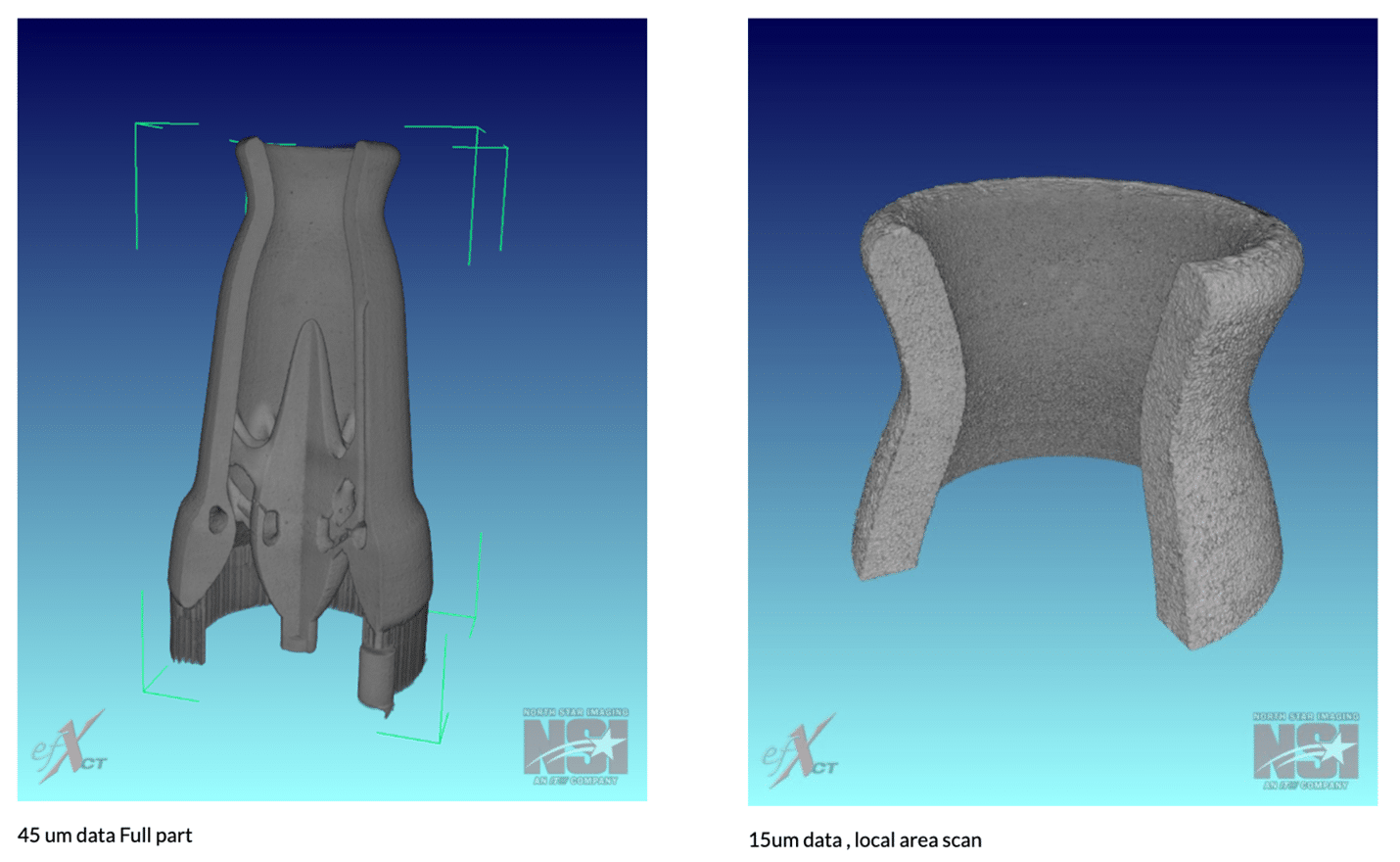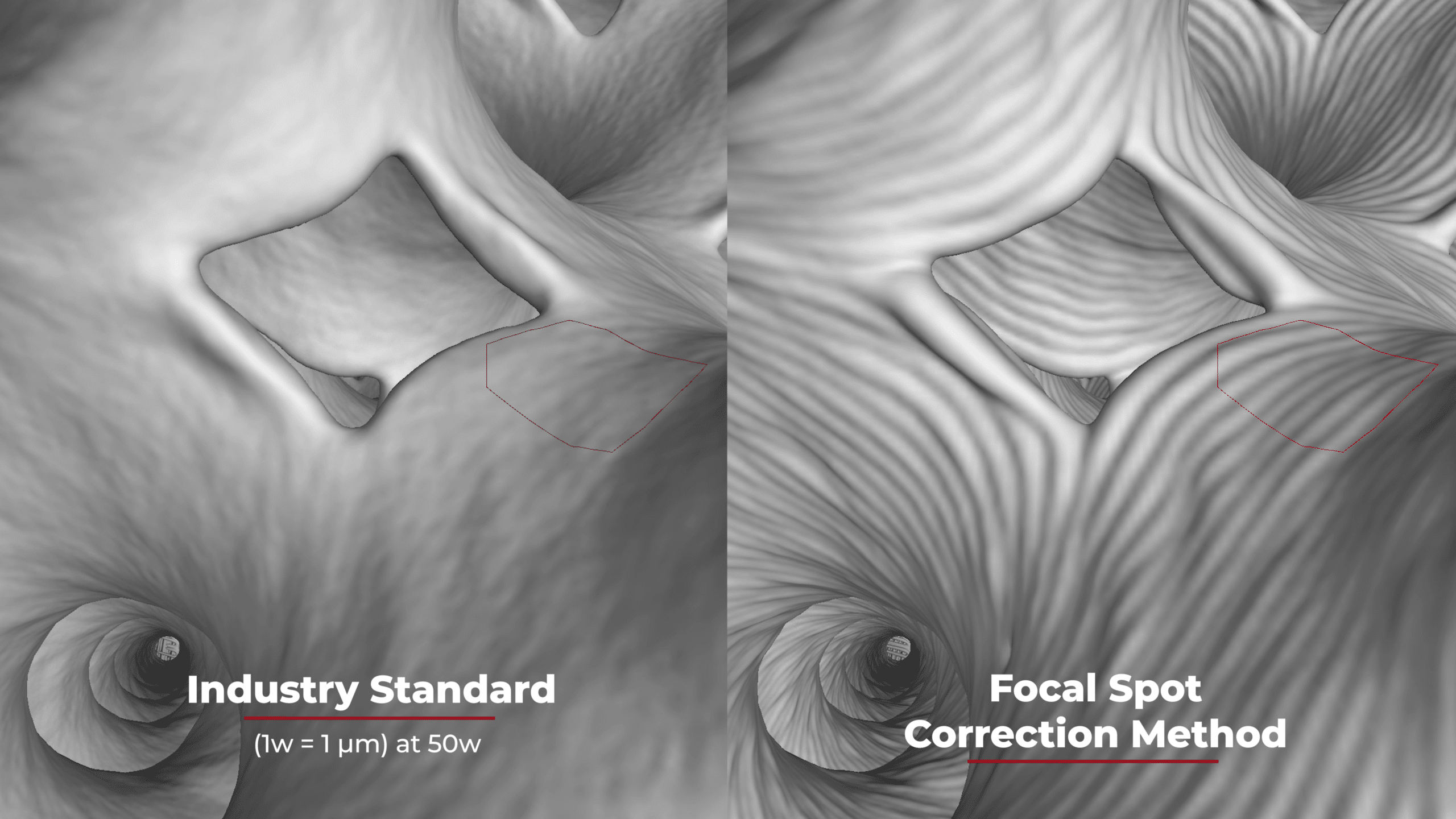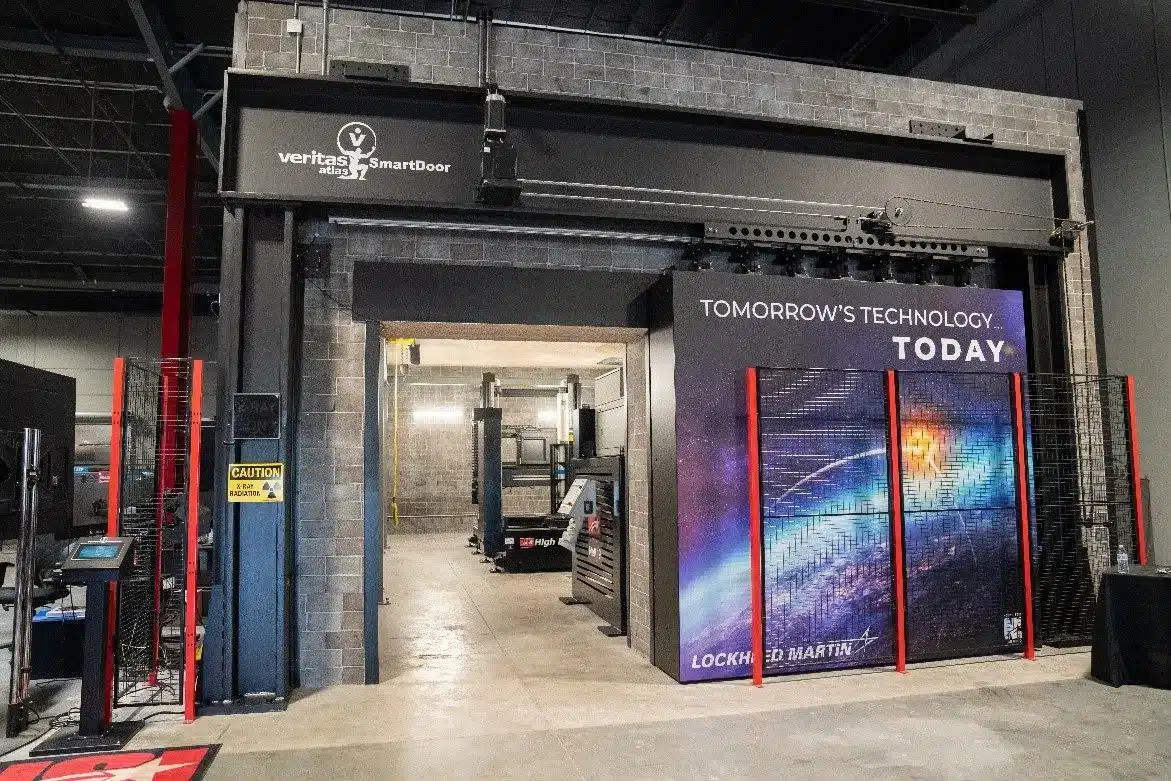Optimizing Defect Detectability
Setting up a computed tomography scan can be a complicated task when trying to optimize defect detectability. There are many parameters that can be adjusted, and many of them have a direct or inverse relationship with other parameters for your scan. Optimizing these parameters can frequently be a process of trial and error, but if you consider the following you can help reduce some of the time spent optimizing your technique.
The first thing to consider is the size of the defects and or features that you would like to image. This will have a very large impact on the technique that you use. Ideally you will set up your scan so that you have at least a 2x2x2 matrix of voxels representing your defect. This makes defect detection much more reliable, especially when using software to analyze the volume data. If you are going to manually interpret the volume data you can push this limit a little bit, but the likelihood of missing a defect is increased. When selecting the magnification to run your scan at, you can measure the resolution by simply dividing the pixel pitch of the detector by the magnification factor that you are scanning at. For example, if you have a 200µm pixel pitch detector and you are scanning at 4x magnification, your scan will be 50µm resolution. If you cannot get the resolution required to achieve the 2x2x2 matrix of voxels representing your minimum size defect, consider preforming multiple scans of localized areas of the sample or possibly using subpiX to increase scan resolution.
Another thing to consider is contrast sensitivity. Regardless of the resolution of your scan, if there isn’t sufficient contrast sensitivity you will not be able to detect the defects. Again it is important to consider the size of the smallest defects that you would like to see. Larger sized defects do not typically require as high of contrast as smaller defects do. Also, it is very important to have high enough contrast when using software to analyze the volume data. Without enough contrast to clearly detect the defects you will likely run into false positive indications or miss some defects entirely. Measuring contrast sensitivity for your computed tomography scan is best done with just a 2 dimensional image, as high contrast 2D images will result in a high contrast scan. One of the simpler ways to measure contrast sensitivity is simply to image a hole type IQI. Then you can use a Contrast to noise tool to measure Contrast to noise ratio and contrast sensitivity. If more contrast is needed you can try using a shorter source to detector distance, or reduce filter on the tube and detector. If you are not using any filter, you can reduce the tube voltage and increase the current to increase contrast. One last way to increase contrast in your images is to run the detector in pixel binning mode.
Finding a balance between scan resolution and contrast can be tricky, because some of the parameters that you adjust to increase contrast will also reduce your resolution. This being said, don’t be afraid to use pixel binning mode on your detector. The additional contrast that pixel binning adds to the scan can make the image quality significantly better. If the loss in resolution from binning the detector makes your smallest defects undetectable, you can combine pixel binning mode with subpiX to get the benefits of pixel binning without the loss in resolution.


